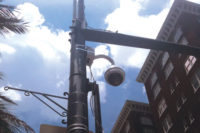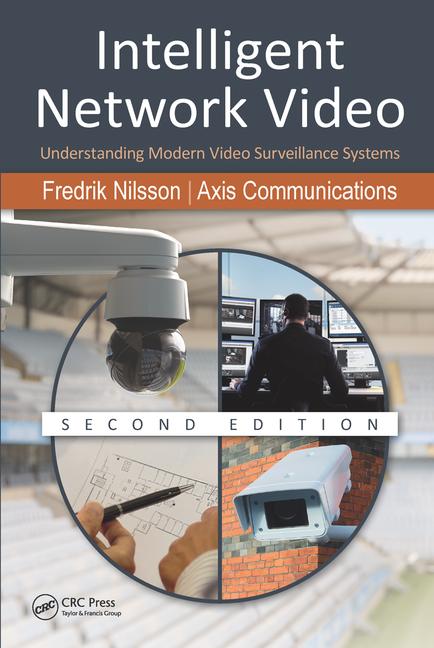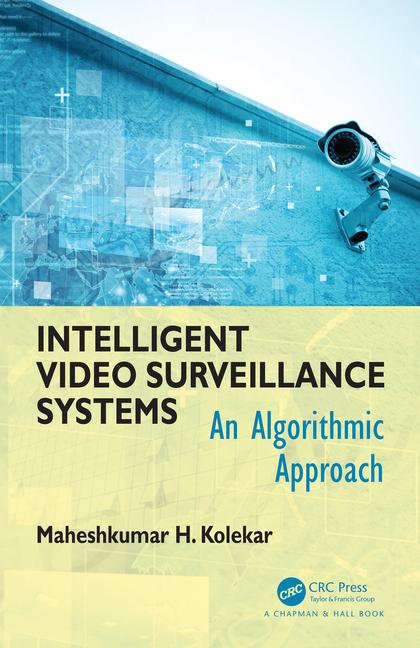Watch My Video, Please

A one-of-a-kind security video monitoring system that balances protection and privacy allowed cameras in sensitive locations, according to Bill Sullivan, Marshfield chief of police.
Products turn into systems and systems turn into services.
Welcome to the new world of security video.
Since the dawn of security time, enterprises big and small have used third parties to monitor their burglar alarms but more recently outsourcing of security video has a bottom line attraction to some.
According to IMS Research, remote video monitoring is forecast to be the fastest growing service within the remote monitoring market. The remote video monitoring services market is worth nearly $250 million and experiencing impressive growth that will continue to accelerate as the global economy recovers and technology improves.
Market analyst Ewan Lamont says that remote video monitoring is good news for central stations and suppliers to the industry. But is it a good thing for enterprise security leaders?
“Everybody is a winner with remote video monitoring services. Alarm dealers can make bigger margins on remote video services compared to alarm monitoring, as well as generating revenue from increased equipment sales, installation and maintenance,” says Lamont. “Customers who are able to replace security officers with a monitored system are reportedly seeing return on investment in a relatively short period of time. As for those who do not have a manned officer to replace, insurance companies are listing remote video monitoring as an equivalent substitute and reducing premiums accordingly. Even telecommunications companies are benefitting from supplying the extra bandwidth that the video transmission requires.”
Advances Come Together
In many ways, technology advances have opened the door to remote video monitoring. Analog has turned into digital; the Internet is the new platform; analytics cuts down on monotonous viewing; and streaming video can go to handhelds, too.Security video has come a long way.
In fact, from Lancaster, Pennsylvania, where the U.S. Navy on a World War II footing helped establish what today is the industry. After the war, RCA took over and made tons of tube cameras. Jump to 2010 and the biggest security monitoring firm has a fine focus on video.
ADT Security Services’ John Kenning, who heads up the firm’s commercial side, has an aim to expand monitoring by bringing together video analytics and access for instantaneous response as a managed service. Among Kenning’s assignments is investment in software technologies to link everything into a single platform.
A recent project centers on a digital network allowing the two major international airports serving the Washington, D.C. area to migrate to the latest generation of video surveillance cameras at Dulles International Airport and Ronald Reagan Washington National Airport. The airports will be able to protect their existing investment in more than 2,200 analog security cameras through the use of encoders that will convert the current video to digital signals before being recorded. In addition to transmitting both live and recorded video, the stand-alone digital network will also integrate data from access control and fire and life safety systems and other inputs for both airport security and operations personnel to view on a single monitor. For example, an access control alarm immediately activates a nearby camera that provides both pre- and post-event video helping airport security personnel to quickly determine the cause of the event.
Monitoring of security video, however, is not a simple assignment, especially when it comes to public spaces. The town of Marshfield, Mass., has found a unique way to balance privacy and protection. When police unraveled a Columbine-like plot that included a planned assault on emergency first responders, it forever changed the psyche of the quaint seaside town. The police department and emergency management agency wanted to improve public safety by installing video cameras in several high-risk public buildings. But since cameras were going into areas where they weren’t historically permitted, officials needed to safeguard the privacy of citizens and town employees.
Camera Has Eyelids
The solution included SituCon Systems and a dozen Axis Communications pan/tilt/zoom network cameras in the town hall, recreation center, library and airport. The cameras were encased in a special privacy protecting enclosure, which provides a mechanical cover over the lens to guarantee privacy. Whenever a town employee activates a wireless “instant alert” button during a security event, the cameras’ “eyelids” open so that dispatchers and police can remotely monitor the location and evaluate the situation before they arrive on scene. To prevent hacking or security risks, the wireless network is only accessible during an incident. “This one-of-a-kind system solved our greatest challenge by allowing us to place cameras in sensitive locations where we never could before,” says Bill Sullivan, chief of police. “It also saved us the time and expense of continually monitoring cameras all day long.” Wireless alert buttons allow town employees to instantly notify police of an incident and automatically initiate recording by the network cameras. Information about the person who pressed the alert button – including a photo, cell phone number and location – are displayed for the dispatcher with the video. Marshfield has also chosen to automatically activate the cameras after-hours, using embedded intelligent video motion detection to deter vandalism or theft.
“When the camera eyelids are closed, people can see that,” adds Sullivan. “And each camera location can be assigned a privacy level.”
Automated behavioral analysis driven by remote access and monitoring holds promise, too. Two examples of this trend are the City of Birmingham, Ala., and the Marriott Hotel in Mumbai, India.
ION 24/7 is the remote monitoring service contracted by Birmingham, which uses AISight from BRS Labs at selected areas. Through camera feeds, the monitoring service alerts whenever abnormal behavior is observed in high crime areas and transit stations and informs the Birmingham police force for interdiction and response purposes.
The Marriott Hotel in Mumbai installed AISight days after the terrorist attacks in November 2008. Faced with challenging and dense terrain surrounding the property fence lines, the system has perimeter cameras that distinguish among the normal movements of staff, personnel, and guests and a potential intruder, or individuals attempting to bypass security screening checkpoints at portal entry points. Alerts are sent to the command and control center within the hotel, to security officers on property, and back to the corporate offices for Marriott and to BRS Labs in the U.S., all remote video monitoring in real-time.
Mobility of Image Delivery
Remote security video monitoring has also gone mobile.One example is Total Connect remote services from Honeywell. In addition to remote control capabilities and notifications, Total Connect now integrates with IP cameras that employ video analytics enabling end-users to receive event-driven emails with video clips when something of interest has been triggered by cameras. Video emails can be received on Web-enabled devices such as laptops, desktops and most smartphones as well as BlackBerry, Apple iPhone, iPod Touch and iPad products.
Security directors with multiple cameras can choose to view all cameras on a single screen or one at a time. Security executives with multiple locations, for example, can manage and view all locations over a secure network with a single login.
There are a number of services in the cloud. For instance, Iveda Solutions provides online security surveillance service, according to CEO David Ly, who calls it managed video as a service or MVaaS. “A data center is capable of hosting live and recorded video from IP-enabled security cameras and allows instantaneous remote retrieval capability for video. Think of this as an off-site DVR solution for real-time video surveillance, remote simultaneous video access, and data archiving services, specifically for security and compliance applications,” he says.
Video hosting and remote video access services often aim at public safety applications where multiple first responders may want to access certain cameras in the public domain for emergencies or forensics. For enterprises, hosted video services allow security to view their cameras from any locations in one easy-to-use dashboard.
A long-time industry player, Brendan Daly of Eye P Video Systems points out that enterprises can be monitored from anywhere these days.
Newer systems are based on IT standards, open standards, which make it easier to remotely monitor the video. Daly says that property management firms can monitor facilities at various locations while managing the bandwidth between them.
Video monitoring has also been invigorated thanks to analytics and intelligence, especially in challenging situations around the world.
One is in Korea, where recognizing the license plate numbers of cars traveling at high speed through a dimly lit tunnel can qualify as a highly challenging surveillance application. Day/night dual-sensor cameras from Arecont Vision send video images along a 100 base T Internet connection.
In Mexico City, HSBC branches boast modified Rainbow cameras which capture highlight and shadow detail in the same scene in high rise glass clad buildings while also offering true day-night images through use of a moving filter. While glass coverage has “green” benefits in terms of heating and lighting, it can be problematic for surveillance. Traditionally, cameras suffer from lack of detail in high-contrast and back-lit situations, low clarity when shadow is predominant and image washout from glare reflection, a problem in banks if the teller is separated from customers by a glass partition.
Adding Audio to Remote Monitoring
To better assess what is happening at a monitored facility, audio can be helpful.The ability to verify an alarm event in real-time can strengthen monitoring and save money, too. It’s a key advantage as a growing number of municipalities pass so-called verified response regulations requiring verification that an intrusion is actually taking place before police will dispatch personnel to the site, according to Felix Gonzales of Sonitrol.
In addition, video technology can be a powerful deterrent to both external and internal theft. It can also provide evidence and help protect from false slip-and-fall claims and similar threats. And the cameras, digital video recorders and ancillary equipment can integrate seamlessly with verified audio detection and other modular components for even greater security, adds Frank Minni, director of the Sonitrol Franchise Program.
Looking for a reprint of this article?
From high-res PDFs to custom plaques, order your copy today!








